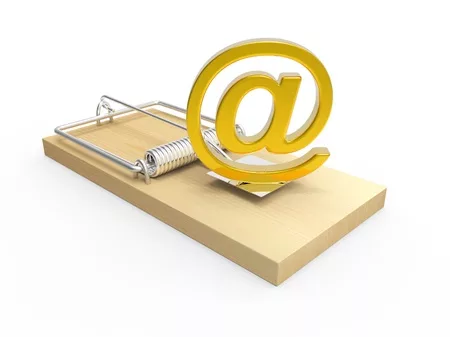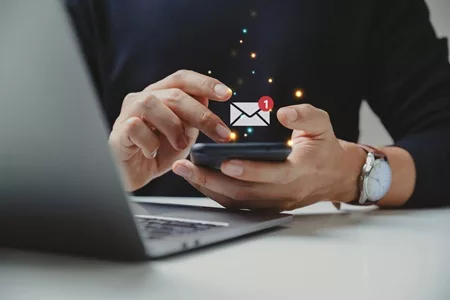When it comes to distributing your content and reaching people across various stages of the buyer’s journey to deliver solutions to their problems, email marketing remains a powerful tool. Even with so many social media and Web 2.0 platforms competing with it for attention, your audience continues to use their email inbox to find solutions to their daily problems, making email marketing a cost-effective way to help people discover your solutions and engage with your business.
Email marketing provides measurable results and valuable insights—but to get those results and insights, you need to create successful email marketing campaigns. And to do that, you need email contacts who are enthusiastic and willing to receive emails from you in the first place. After all, the best emails in the world won’t take you very far if you have a small, disengaged, or unenthusiastic pool of email contacts.
And how do you get those enthusiastic email contacts who are oh-so-critical for your email marketing campaign’s success? Let’s find out by delving deep into the wonderful world of email capture.
What Is Email Capture?

You have a great product or service, a great website, great content, and great emails to send. But now, the age-old question: how do you help people who are looking for the solution you’re offering to their problems find your solution in the first place?
Enter email capture—collecting email addresses from people who willingly provide you with their contact information. This process is essential in building a database of contacts interested in your brand, products, or content so you can communicate directly with them through targeted and personalized messaging.
Especially crucial, email capture techniques help you find these people while adhering to ethical, permission-based marketing principles and anti-spam regulations such as CAN-SPAM or GDPR—building trust while nurturing your leads through the customer’s journey with measurable ROI.
Let’s take a look at ways to get email addresses from prospective customers:
How to Optimize Your Website Design for Email Capture
As your business’s online home, your website is a central node of your email capture strategy, and ensuring your website is optimized to encourage email collection is essential to building email lists that connect you to interested, engaged contacts who will respond positively to your email marketing campaigns.
Website optimization strategies for email capture include:
- Placing prominent, well-designed, and visually compelling sign-up forms in strategic locations on your website within relevant content sections
- Communicating your value proposition for your email list (exclusive content, special offers, access to resources, etc.)
- Keep your sign-up forms short and simple.
- Use persuasive, action-oriented calls-to-action that create a sense of urgency and highlight benefits rather than generic phrases.
- Incorporate trust indicators and social proof.
- Optimize your site and forms for mobile users.
- Continuously optimize and test your email capture elements’ performance, using website analytics tools to track conversion metrics and determine areas for improvement.
In addition to globally optimizing your site, you can also create entire regions of your website designed solely for email capture—email capture landing pages.
How to Build a Landing Page on Your Website to Collect Email Addresses
Building a dedicated landing page to collect email addresses is one of the most direct and powerful forms of email capture. By creating pages on your site dedicated to capturing email addresses, you can create a focused, clear message and call-to-action encouraging email opt-ins compared to other pages on your website, such as your homepage or pillar pages with other primary purposes.
A website landing page to collect email addresses could be a dedicated sign-up page for an email newsletter or to access gated content such as an eBook, white paper, or other gated mid-funnel asset or lead magnet.
Let’s take a look at some of the essentials for building an email capture landing page that works:
Elements of a High-Converting Website Landing Page:
- A clear, compelling, attention-grabbing headline that communicates the value proposition of joining your email list
- Persuasive and engaging copy that focuses on benefits, offers, or resources
- Visually appealing images or graphics that reinforce your value proposition
- A simple, focused form
- A prominent, compelling call-to-action button with action-oriented language
- Social proof elements, such as testimonials or reviews, to establish trust
- Privacy assurances to further build trust
- Value-driven incentives
- Minimal distractions
- Mobile-friendly design
- Clear exit options for visitors who choose not to subscribe
A/B Testing and Experimentation
Due to their singular focus on collecting emails, landing pages provide excellent opportunities to gain clear, actionable insights into your email collection strategy. By A/B testing various elements and comparing the results of multiple tweaks, you can continually optimize and iterate on your landing pages to create a more effective email marketing strategy for your business.
Integrating Landing Pages with HubSpot
Email marketing and automation platforms like HubSpot can seamlessly connect your website forms to your CRM, automating capturing and managing your leads. By embedding HubSpot-powered email collection forms on your website, you can import leads and automatically segment them into appropriate workflows and automated campaigns with minimal effort while also taking advantage of versatile CRM tools to further manage your growing email marketing leads.
Why Transparent and Ethical Email Capture Practices Are Essential
Compared to buying bulk lists of email contacts (which, as HubSpot so astutely puts it, is “always a bad idea”), great email capture strategies are opt-in and permissions-based. Capturing emails means that every contact in your list has given their full consent for you to contact them.
Contacts who did not give clear and explicit consent to receive your emails, on the other hand, are more likely to mark your emails as spam or provide negative feedback that can hurt your ability to communicate with old and new contacts. These practices are heavily penalized under privacy regulations such as GDPR and can even lead to your business’s email account being restricted or closed.
Make sure your email capture strategies are ethical and transparent (and law-abiding) by:
- Obtaining explicit consent with an opt-in form, clear and direct language, and an accurate description of the content your contacts will receive.
- Providing a clear privacy policy that assures your contacts that their data is in good hands.
- Making unsubscribing a simple process and respecting unsubscribes and complaints.
- Utilizing a double opt-in process, if desired, to ensure the subscriber is genuinely interested in receiving your emails.
- Being transparent about the content and frequency of the emails your contacts will receive.
- Complying with all applicable data protection regulations, such as GDPR, CAN-SPAM, or CASL, depending on your jurisdiction and the location of your subscribers.
- Clearly and honestly representing yourself in your email contacts.
Following applicable best practices builds trust with your subscribers, fosters a stronger positive relationship with your audience, and contributes to the overall long-term success of your email marketing efforts.
Make Your Website an Email Capture Wunderkind with Intuitive Websites
As a Platinum HubSpot Solutions Partner, Intuitive Websites is here to invest in your success and help you make the most of HubSpot’s industry-leading email marketing and marketing automation tools to capture emails, build your marketing empire, connect new customers to the solutions you offer to their most pressing problems, and ultimately, grow your business.
From onboarding to technical support and strategic guidance, contact us today for a free email strategy consultation and see what we can do for you.
Email Capture FAQ
Why is email marketing still important in the age of social media?
Email marketing remains important because people continue to use their email inbox to find solutions to their daily problems. Despite the competition from social media and other platforms, email is a cost-effective way to deliver solutions and engage with your audience.
How do I get enthusiastic email contacts for my email marketing campaign?
To get enthusiastic email contacts, you need to focus on building a database of contacts interested in your brand, products, or content. You can do this through ethical email capture techniques that adhere to permission-based marketing principles and anti-spam regulations. This helps build trust and nurture leads through the customer journey.
How can I optimize my website design for email capture?
To optimize your website design for email capture, you can:
- Place prominent sign-up forms in strategic locations on your website.
- Clearly communicate the value proposition of joining your email list.
- Keep sign-up forms short and simple.
- Use persuasive calls-to-action that create a sense of urgency.
- Incorporate trust indicators and social proof.
- Optimize your site and forms for mobile users.
- Continuously test and optimize your email capture elements based on conversion metrics and analytics.
Why is transparent and ethical email capture essential?
Transparent and ethical email capture practices are essential to comply with privacy regulations and build trust with your subscribers. Buying bulk lists of email contacts is not recommended, as it can lead to negative feedback and penalties. It’s important to obtain explicit consent, provide clear privacy policies, make unsubscribing easy, and comply with data protection regulations. Following best practices fosters a positive relationship with your audience and contributes to the long-term success of your email marketing efforts.
About the Author
Willow Ascenzo is one of Intuitive Websites’ content specialists, with a right-brain/left-brain blend of Creative Writing and Physics that helps us create compelling content and tell brand stories for our diverse blend of clients. Willow lives in downtown Madison, Wisconsin, and can be found on her bike when she isn’t in front of a word processor.


